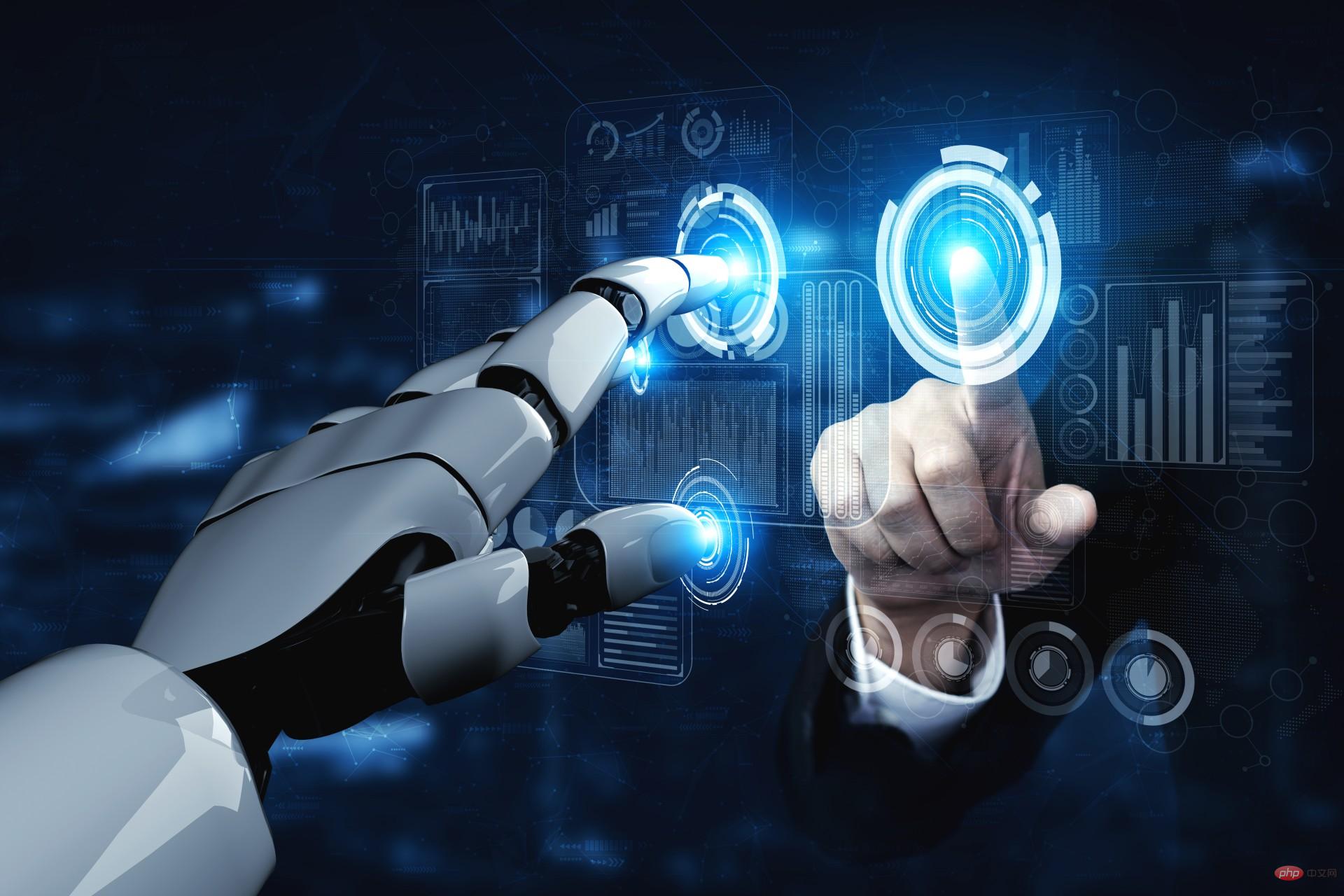
For retail businesses, one of the most powerful ways to increase sales and efficiency is to enhance the customer’s shopping experience. The easier it is for customers to find and buy what they need, the more successful the business will be. Many technologies are paving the way for enhanced shopping experience for customers around the world. Artificial intelligence is one of the driving forces behind these technologies. Let’s take a look at how AI in retail actually works.
Virtual Try-On Solutions
One powerful technology driving the customer retail experience forward is virtual try-on. This leverages artificial intelligence and augmented reality to allow customers to try on clothing, accessories and even see if new furniture would fit in their room. Users can use these features at home, which is the main advantage of this technology.
You may have encountered similar AR-based virtual try-on solutions. These experiences provide opportunities to try on shoes, watches, eyeglasses, cosmetics, and more. While AR is the key behind this technology, artificial intelligence helps expand AR’s capabilities and create more effective solutions.
For example, artificial intelligence can create images of models wearing clothes. Customers can select a model that best matches their body type, and a machine learning algorithm can create images of the model wearing the product. Alternatively, artificial intelligence algorithms could be used to analyze users’ faces to more accurately place glasses and other accessories during online product testing.
Smart Mirror
Closely related to virtual try-on technology, smart mirrors have a great opportunity to improve the retail customer experience. However, unlike many other virtual try-on experiences, smart mirrors deliver these experiences through devices installed in your home or in-store. This allows for more advanced applications of virtual try-on solutions that may require additional hardware.
Smart mirrors are powered by IoT, data science and machine learning algorithms. This solution can be integrated with any systems and services such as ERP or CRM. For example, smart mirrors can not only simulate what an item will look like in use, but can also help customers check product availability and prices, check the time, weather, or the latest store offers.
Businesses may find opportunities to tightly integrate smart mirrors with virtual assistants. This enables smart mirrors to provide customers with personalized beauty and fashion advice. Smart mirrors powered by artificial intelligence and augmented reality have the opportunity to combine many of these technologies into one package.
Automated Self-Checkout
Another way to improve your customer experience is through self-checkout automation. Some businesses have completely replaced traditional checkout counters with sophisticated monitoring systems. This allows customers to simply pick up what they like and walk out of the store. The system then charges the customer for the items they put in their shopping cart. Amazon is one of the most well-known innovators of this technology.
Advanced self-checkout technology powered by IoT and artificial intelligence. Using a complex network of sensors and artificial intelligence, businesses can track what items are put in each shopping cart and who is buying them, among other advanced tracking solutions.
However, not every business has the resources that Amazon has. More advanced and convenient self-checkout solutions can be implemented on a smaller scale. For example, smart vending machines can be used to partially automate areas within a store. This makes it easier for guests to open the refrigerator door, take out items, and close the door. The purchase is then charged to their card.
AI-driven demand forecasting
Another step in making shopping easier for customers is to provide the products they need, when they need them. AI-driven demand forecasting can help. Artificial intelligence can effectively manage large amounts of data processing. Backed by massive amounts of data, artificial intelligence in retail can make accurate predictions about changes in demand for certain products.
For example, a company can use a time series approach to predict vegetable demand for the next month based on historical sales transaction data from the previous three months. The algorithm takes into account trends, cyclical fluctuations, seasonality and behavioral patterns to provide more accurate forecasts.
Improving this system will not only help deliver goods to customers when they need them, but will also make order fulfillment and logistics easier. It can also be deeply integrated with marketing campaigns and manufacturing process management. Because of these advantages, machine learning predictions are a popular choice for many businesses, large and small. As you examine complex data sets, you can uncover new business patterns and correlations to enhance your business intelligence.
Interactive Chatbots and Virtual Assistants
One of the most important aspects of the shopping experience is customer service. Customers often have questions or need help finding the products they want. These solutions can also play a role in data collection to improve marketing campaigns. This data helps personalize the user experience and recommend complementary products.
Чат-боты и виртуальные помощники также могут помочь покупателям совершать покупки в магазинах и через Интернет. Когда чат-боты и виртуальные помощники автоматизируют определенные аспекты процесса обслуживания клиентов, скорость и эффективность вашего бизнеса могут возрасти. Чат-боты также могут выполнять административные задачи, такие как управление запасами, анализ данных о продажах, выставление счетов и т. д.
Помощники с искусственным интеллектом могут вести себя даже лучше, как настоящие помощники по покупкам. Благодаря технологиям NLP и NLU виртуальные помощники могут понимать голосовые команды и даже отвечать устно. Обработка естественного языка связана с синтаксисом и структурой, а понимание естественного языка помогает понять фактическое назначение запроса путем определения контекста.
Заключительные мысли об искусственном интеллекте в розничной торговле
Чтобы получить преимущество на рынке, предприятиям необходимо проявлять творческий подход при поиске инноваций и способов решения проблем. Возможно, для этого не потребуется изобретать велосипед, но может потребоваться поиск новых способов использования существующих технологий полезным и значимым образом.
Retail AI предлагает огромные возможности для улучшения качества обслуживания клиентов в розничной торговле, как в магазине, так и через Интернет. Некоторые из наиболее интересных применений этих технологий связаны с сотрудничеством. Объединив такие технологии, как искусственный интеллект и дополненную реальность, компании могут достичь финансовых целей, построив прочные отношения с клиентами.
The above is the detailed content of Five ways artificial intelligence can enhance the retail experience. For more information, please follow other related articles on the PHP Chinese website!
 2023年机器学习的十大概念和技术Apr 04, 2023 pm 12:30 PM
2023年机器学习的十大概念和技术Apr 04, 2023 pm 12:30 PM机器学习是一个不断发展的学科,一直在创造新的想法和技术。本文罗列了2023年机器学习的十大概念和技术。 本文罗列了2023年机器学习的十大概念和技术。2023年机器学习的十大概念和技术是一个教计算机从数据中学习的过程,无需明确的编程。机器学习是一个不断发展的学科,一直在创造新的想法和技术。为了保持领先,数据科学家应该关注其中一些网站,以跟上最新的发展。这将有助于了解机器学习中的技术如何在实践中使用,并为自己的业务或工作领域中的可能应用提供想法。2023年机器学习的十大概念和技术:1. 深度神经网
 人工智能自动获取知识和技能,实现自我完善的过程是什么Aug 24, 2022 am 11:57 AM
人工智能自动获取知识和技能,实现自我完善的过程是什么Aug 24, 2022 am 11:57 AM实现自我完善的过程是“机器学习”。机器学习是人工智能核心,是使计算机具有智能的根本途径;它使计算机能模拟人的学习行为,自动地通过学习来获取知识和技能,不断改善性能,实现自我完善。机器学习主要研究三方面问题:1、学习机理,人类获取知识、技能和抽象概念的天赋能力;2、学习方法,对生物学习机理进行简化的基础上,用计算的方法进行再现;3、学习系统,能够在一定程度上实现机器学习的系统。
 超参数优化比较之网格搜索、随机搜索和贝叶斯优化Apr 04, 2023 pm 12:05 PM
超参数优化比较之网格搜索、随机搜索和贝叶斯优化Apr 04, 2023 pm 12:05 PM本文将详细介绍用来提高机器学习效果的最常见的超参数优化方法。 译者 | 朱先忠审校 | 孙淑娟简介通常,在尝试改进机器学习模型时,人们首先想到的解决方案是添加更多的训练数据。额外的数据通常是有帮助(在某些情况下除外)的,但生成高质量的数据可能非常昂贵。通过使用现有数据获得最佳模型性能,超参数优化可以节省我们的时间和资源。顾名思义,超参数优化是为机器学习模型确定最佳超参数组合以满足优化函数(即,给定研究中的数据集,最大化模型的性能)的过程。换句话说,每个模型都会提供多个有关选项的调整“按钮
 得益于OpenAI技术,微软必应的搜索流量超过谷歌Mar 31, 2023 pm 10:38 PM
得益于OpenAI技术,微软必应的搜索流量超过谷歌Mar 31, 2023 pm 10:38 PM截至3月20日的数据显示,自微软2月7日推出其人工智能版本以来,必应搜索引擎的页面访问量增加了15.8%,而Alphabet旗下的谷歌搜索引擎则下降了近1%。 3月23日消息,外媒报道称,分析公司Similarweb的数据显示,在整合了OpenAI的技术后,微软旗下的必应在页面访问量方面实现了更多的增长。截至3月20日的数据显示,自微软2月7日推出其人工智能版本以来,必应搜索引擎的页面访问量增加了15.8%,而Alphabet旗下的谷歌搜索引擎则下降了近1%。这些数据是微软在与谷歌争夺生
 荣耀的人工智能助手叫什么名字Sep 06, 2022 pm 03:31 PM
荣耀的人工智能助手叫什么名字Sep 06, 2022 pm 03:31 PM荣耀的人工智能助手叫“YOYO”,也即悠悠;YOYO除了能够实现语音操控等基本功能之外,还拥有智慧视觉、智慧识屏、情景智能、智慧搜索等功能,可以在系统设置页面中的智慧助手里进行相关的设置。
 人工智能在教育领域的应用主要有哪些Dec 14, 2020 pm 05:08 PM
人工智能在教育领域的应用主要有哪些Dec 14, 2020 pm 05:08 PM人工智能在教育领域的应用主要有个性化学习、虚拟导师、教育机器人和场景式教育。人工智能在教育领域的应用目前还处于早期探索阶段,但是潜力却是巨大的。
 30行Python代码就可以调用ChatGPT API总结论文的主要内容Apr 04, 2023 pm 12:05 PM
30行Python代码就可以调用ChatGPT API总结论文的主要内容Apr 04, 2023 pm 12:05 PM阅读论文可以说是我们的日常工作之一,论文的数量太多,我们如何快速阅读归纳呢?自从ChatGPT出现以后,有很多阅读论文的服务可以使用。其实使用ChatGPT API非常简单,我们只用30行python代码就可以在本地搭建一个自己的应用。 阅读论文可以说是我们的日常工作之一,论文的数量太多,我们如何快速阅读归纳呢?自从ChatGPT出现以后,有很多阅读论文的服务可以使用。其实使用ChatGPT API非常简单,我们只用30行python代码就可以在本地搭建一个自己的应用。使用 Python 和 C
 人工智能在生活中的应用有哪些Jul 20, 2022 pm 04:47 PM
人工智能在生活中的应用有哪些Jul 20, 2022 pm 04:47 PM人工智能在生活中的应用有:1、虚拟个人助理,使用者可通过声控、文字输入的方式,来完成一些日常生活的小事;2、语音评测,利用云计算技术,将自动口语评测服务放在云端,并开放API接口供客户远程使用;3、无人汽车,主要依靠车内的以计算机系统为主的智能驾驶仪来实现无人驾驶的目标;4、天气预测,通过手机GPRS系统,定位到用户所处的位置,在利用算法,对覆盖全国的雷达图进行数据分析并预测。


Hot AI Tools

Undresser.AI Undress
AI-powered app for creating realistic nude photos

AI Clothes Remover
Online AI tool for removing clothes from photos.

Undress AI Tool
Undress images for free

Clothoff.io
AI clothes remover

AI Hentai Generator
Generate AI Hentai for free.

Hot Article

Hot Tools

WebStorm Mac version
Useful JavaScript development tools

SublimeText3 Mac version
God-level code editing software (SublimeText3)

SublimeText3 Chinese version
Chinese version, very easy to use

Safe Exam Browser
Safe Exam Browser is a secure browser environment for taking online exams securely. This software turns any computer into a secure workstation. It controls access to any utility and prevents students from using unauthorized resources.

Dreamweaver Mac version
Visual web development tools







